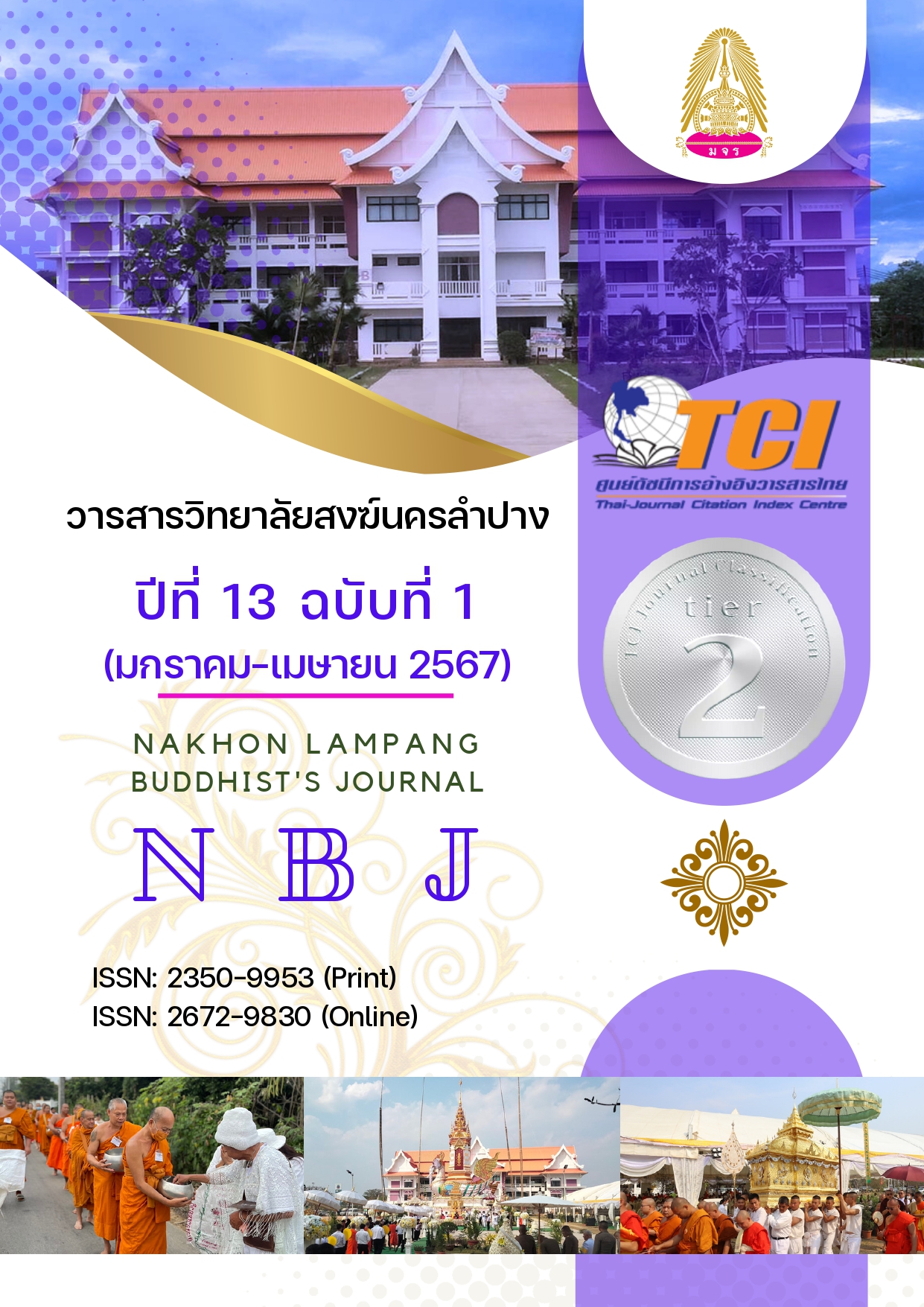การพัฒนาศักยภาพทางการตลาดของกลุ่มผู้ประกอบการแปรรูปสมุนไพรหญ้าเอ็นยืดในพื้นที่ภาคกลางของประเทศไทย
Main Article Content
บทคัดย่อ
งานวิจัยครั้งนี้มีวัตถุประสงค์ 1) เพื่อศึกษาสภาพปัจจุบัน สภาพปัญหา ด้านการตลาดของกลุ่มผู้ประกอบการแปรรูปสมุนไพรหญ้าเอ็นยืดในพื้นที่ภาคกลางของประเทศไทย 2) เพื่อพัฒนารูปแบบการพัฒนาศักยภาพทางการตลาด 3) เพื่อทดลองใช้รูปแบบการพัฒนาศักยภาพทางการตลาด 4) เพื่อประเมินผลการพัฒนาศักยภาพทางการตลาด ฯ การศึกษาครั้งนี้ใช้ฐานความรู้ด้านปัจจัยส่วนประสมทางการตลาด (4Ps) และการตลาด 5.0 (Marketing 5.0) เป็นกรอบแนวคิดการวิจัย เป็นการวิจัยและพัฒนา (Research and Development) โดยใช้ระเบียบวิธีวิจัยแบบผสานวิธี (Mixed Method Research) ระหว่างการวิจัยเชิงคุณภาพ (Quality Research) และเชิงปริมาณ (Quantity Research) ประชากรและกลุ่มตัวอย่างประกอบด้วย ตัวแทนกลุ่มผู้ประกอบการแปรรูปสมุนไพรหญ้าเอ็นยืดในพื้นที่ภาคกลางของประเทศไทย จำนวน 11 ราย สำหรับการสัมภาษณ์เชิงลึก, ผู้ใช้ผลิตภัณฑ์แปรรูปสมุนไพรหญ้าเอ็นยืดในพื้นที่ภาคกลางของประเทศไทย กลุ่มตัวอย่าง 385 คน สำหรับตอบแบบสอบถาม และผู้ทรงคุณวุฒิจำนวน 13 ท่าน สำหรับการสนทนากลุ่ม (Focus Group Discussion) เครื่องมือที่ใช้ในการเก็บข้อมูลเชิงคุณภาพได้้แก่ แบบสัมภาษณ์แบบกึ่งโครงสร้าง เครื่องมือที่ใช้ในการเก็บข้อมูลเชิงปริมาณได้แก่ แบบสอบถามความคิดเห็นแบบประมาณค่า 5 ระดับ (Likert scale) การวิเคราะห์ข้อมูลเชิงคุณภาพใช้การวิเคราะห์เชิงเนื้อหา (Content Analysis) การวิเคราะห์ข้อมูลเชิงปริมาณใช้โปรแกรมสำเร็จรูปเพื่อวิเคราะห์ข้อมูลทางสถิติ ได้แก่ ค่าความถี่ ค่าร้อยละ ค่าเฉลี่ย และส่วนเบี่ยงเบนมาตรฐาน ผลการวิจัยพบว่า รูปแบบการพัฒนาศักยภาพทางการตลาดที่พัฒนาขึ้นจากการวิจัยนี้ได้รับการยืนยันจากผู้ทรงคุณวุฒิทุกท่านว่ามีความถูกต้อง เหมาะสม เป็นไปได้ และเป็นประโยชน์ในระดับมาก ( = 4.25) และจากผลการทดลองใช้รูปแบบการพัฒนาศักยภาพทางการตลาด ฯ ผ่านตัวแทนกลุ่มผู้ประกอบการ ฯ จำนวน 1 ราย ตลอดระยะเวลา 3 เดือน พบว่า สามารถเพิ่มศักยภาพทางการตลาดให้กับผู้ประกอบการแปรรูปสมุนไพรหญ้าเอ็นยืดในพื้นที่ภาคกลางของประเทศไทยได้ด้วยการมีรายได้เพิ่มขึ้นร้อยละ 22 เมื่อเปรียบเทียบกับผลประกอบการก่อนหน้าทำการทดลอง
Article Details

อนุญาตภายใต้เงื่อนไข Creative Commons Attribution-NonCommercial-NoDerivatives 4.0 International License.
เอกสารอ้างอิง
Chemsripong, S. (2017). Factors Affecting Export Ability of Herbal Business in Phitsanulok Province. Journal of Business, Economics and Communications. Naresuan University, 12(2), 161-175.
Cochran, W.G. (1953). Sampling Techniques. New York: John Wiley & Sons. Inc.
Klinkhachon, S. (2015). Small and Micro Community Enterprise Potential Development Herbal Products Ban Khaonanai Tonyuan Sub-District Amphoe Phanom Suratthani Province. Veridian E-Journal, Silpakorn University, 8(2), 2643–2655.
Kotler, P. (2000). Marketing Management. Upper Saddle River NJ: Prentice Hall.
Kotler, P., Hermawan, K. & Iwan, S. (2021). Marketing 5.0: Technology for Humanity. John Wiley and Sons, Inc.
Likert, R. (1967). The Method of Constructing an Attitude Scale, Reading in Attitude Theory and Measurement. edited by Martin Fishbein. New York: John Wiley & Son.
Maisont, P. (2020). Process Innovation of New Product Development in Thai Herbal Non-Food Product in Collaboration with Government Support Policy for OTOP. (Doctoral Dissertation). Chulalongkorn University. Bangkok.
McCarthy, E. J. (1960). Basic Marketing: A Managerial Approach. Homewood (Illinois): R.D. Irwin.
Office of the National Economic and Social Development Council. (2019). Master plan under the national strategy, grassroots economy issue 2018–2037.
Office of the National Economic and Social Development Council. (2021). Draft Regional Development Plan Framework 2023–2027.
Pitipon, S. (2013). Plantago major L., a local Thai vegetable, Herbs in the international world, Record of the Land No. 1, Grass & Herbal medicine near you. (5th ed.). Bangkok: Pramattha.
Sindecharak, T. et al. (2018). Problems and Obstacles in Production System, Distribution, and Consumption of Stakeholders for the Organic Herbal Medicine Products: Case Study of Chao Phya Abhaibhubejhr Hospital Foundation. Thai Journal of Science and Technology (TJST), 26(8), 1423-1434.
Sriphimai, P. & Buosonte, R. (2019). A Development of The Evaluability Assessment Model forEducational Program. Journal of Education Naresuan University, 21(4), 212 – 223.
Stufflebeam & Shinkfield. (2007). Evaluation Theory, Models and Applications. John Wiley and Son, Inc.
Teeyabun, N. et al. (2021). Community based Participatory Action in undertaking Pattern of Herbal Group in Agriproduct Processing: A Case Study of Green Herb Balm Community Enterprise in Tambon Nong Phueng, Chiang Mai Province. Journal of Humanities and Social Sciences, Special 15th anniversary, 84-97.
Teitao, N. & Pongyeela, A. (2021). The Success of Thai Herbal Business under the Creative Economy Concept and Product Innovation. Journal of MCU Peace Studies, 10(6), 2411-2422.
Thaemngoen, J. (2012). Development of Marketing Strategies for Herbal Products Produced by Small and Micro Community Enterprises in Ubon Ratchathani. Humanity and Social Science Journal, 3(1), 1-23.
Thongsakol, J. (2019). How to Measure Research Outcome and Impact: The Case Study of
Mahidol University International College. Interdisciplinary Studies Journal, 19(2), 17–28.
Warnset, C. (2015). Problems and Obstacles in Production System, Distribution, and Consumption of Stakeholders for the Organic Herbal Medicine Products: Case Study of Chao Phya Abhaibhubejhr Hospital Foundation. (Master’s Thesis). Thammasat University. Bangkok.
Wasi, P. (2015). Methods and mechanisms of the Pracharath strategy to strengthen the base economy Rooted in the principles of sufficiency economy. Bangkok: Morchonban.
Wongwirach, K. et al. (2022). Online Marketing Mix Factors Affecting OTOP Product Purchasing Decisions via Online Platforms. Journal of Nakhonratchasima College (Humanities and Social Sciences), 16(3), 64–78.

